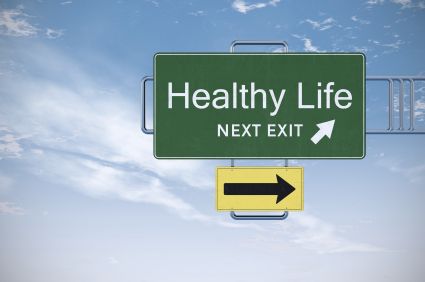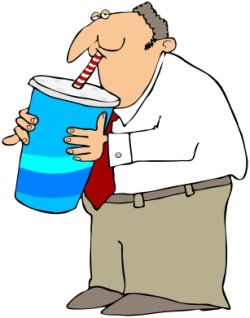Protein Requirement

Several factors can affect your protein requirement
Your need for protein can vary based on age, gender, genetics, health and the quality of the protein. For this reason, we are only able to define protein needs by giving general guidelines.
Doing the math
One way to measure protein requirement is to say that every day we need about 7 grams of protein for every 20 pounds of body weight. This means that if you weigh 150 pounds, you would need about 52.5 grams of protein each day.
150 ÷ 20 = 7.5 7.5grams x 7 = 52.5grams
Many health experts put it a different way by saying that we should get about 30% of our calories each day from healthy eating protein sources. Protein has about 4 calories per gram, so if you consume 2400 calories a day, about 720 of them should be from protein.
2400 calories x 30% = 720 calories

The Food Guide Pyramid
For a long time, you may have heard references to the Food Pyramid, which is a way to visualize the amount of food you should eat from each of the five food groups, each day. By this method, depending on your weight, you need two to three 3-ounce servings of meat, fish, poultry or meat analog each day. (A meat analog is a vegetable-based product that is manufactured to look and taste like certain meat products, such as hot dogs and burgers.)
After twenty years, the USDA has changed their visual representation for eating healthy from a pyramid to a simpler concept called "MyPlate." This newer model shows a dinner plate divided into four portions for Protein, Vegetables, Fruits and Grains, with a side of Dairy.
Getting your protein requirement, if you don't want to do the math
Okay, so you’re not a math whiz, you’re a gourmand, and you don't want to sit around doing equations to discover what you should eat. Suffice it to say, that if you live in a developed country such as the United States, it is more likely that you are getting too much protein than not enough.
When you consider that most foods have some protein and many foods have significant protein, if you are eating three good meals a day, you are probably getting enough protein.
If you have eggs (possibly with ham or sausage) or cereal with milk or toast with peanut butter for breakfast, a salad with chicken breast or a ham and cheese sandwich or minestrone soup for lunch, and a hamburger or a pork chop or spaghetti and meatballs for dinner, you are most likely getting more than enough protein. Even if you skipped a meal, you probably are still getting enough protein.
Looking at a serving
If you misplaced your meat scale, the usual guideline for describing a meat serving is that the portion should be the size of a standard deck of playing cards. (Just imagine how many servings are in that platter-sized prime rib served at your favorite restaurant!)
For non-meat protein sources, a serving, which is 1 large egg, ½ cup cooked beans or rice, or 2 Tablespoons of seeds, nuts or peanut butter, is equivalent to only about 1/3 of the protein in a serving of meat. Tofu can also be included in this group with a serving size of about 4oz.
Click here for a high-protein, meatless meatball recipe.
In addition, most health experts recommend that, whenever possible, choose a leaner or low-fat version of the significant protein sources.
Is your protein complete?
Another aspect of protein requirements, is that foods that contain all of the essential amino acids are called “complete proteins.” These complete protein foods are generally animal foods. Plant foods do not, as a rule, have complete proteins, but by eating combinations of plant foods, called “complementary proteins, ” you can obtain a complete protein.
For example, when you eat beans with rice, such as is often found in Mexican cuisine, you are obtaining a complete protein. The beans and rice complement each other, in that each has some of the essential amino acids and when eaten together, they provide all of the essential amino acids. It is generally believed by nutritionists that it is not necessary to eat these complementary proteins at the same meal.
To meet your protein requirement, eat these proteins together
Here is a list of complementary proteins, that is proteins that when eaten together become complete.
Legumes... with Nuts
Legumes... with Grains
Legumes... with Seeds
Legumes... with Dairy
Grains... with Dairy
Nuts/Seeds... with Dairy
Nuts/Seeds... with Legumes
Dairy... with Nuts/Seeds and Legumes
Generally speaking:
Complete Proteins = Animal proteins
Incomplete Proteins = Plant Proteins
Dangers of not enough
You probably know that protein is an important nutrient. For that reason, if there is not enough protein in your diet, it will have a noticeable effect on your health, from making you more susceptible to infections to actually causing you to waste away.
However, if you live in an underdeveloped country, protein deficiency may be a grave concern. People in poor countries struggle to meet the minimum requirements for protein.
What happens if I eat too much?
As with anything, you can get too much of a good thing. If you eat too much protein, your body can convert it to energy, but if that energy is not used, it will be stored as fat, which could lead to obesity. In addition, eating too much protein puts a heavier load on the kidneys to get rid of the by-products of protein metabolism. There has also been some suggestion of a link between eating large amounts of animal protein (which is usually accompanied by saturated fat), and heart disease, cancer and possibly diabetes. Although protein is good for you,don't overdo it.
Protein requirement in a few words
--Eat some protein foods at each meal.
--Eat protein from a variety of sources.
--In the case of animal protein, concentrate on the leaner or low-fat types.
--Just for fun, investigate some of the protein foods from plants.

